Photographer Maryam Eisler Is Taking Quarantine Portraits of Artists From Shirin Neshat to George Condo on FaceTime — See the Images Here.
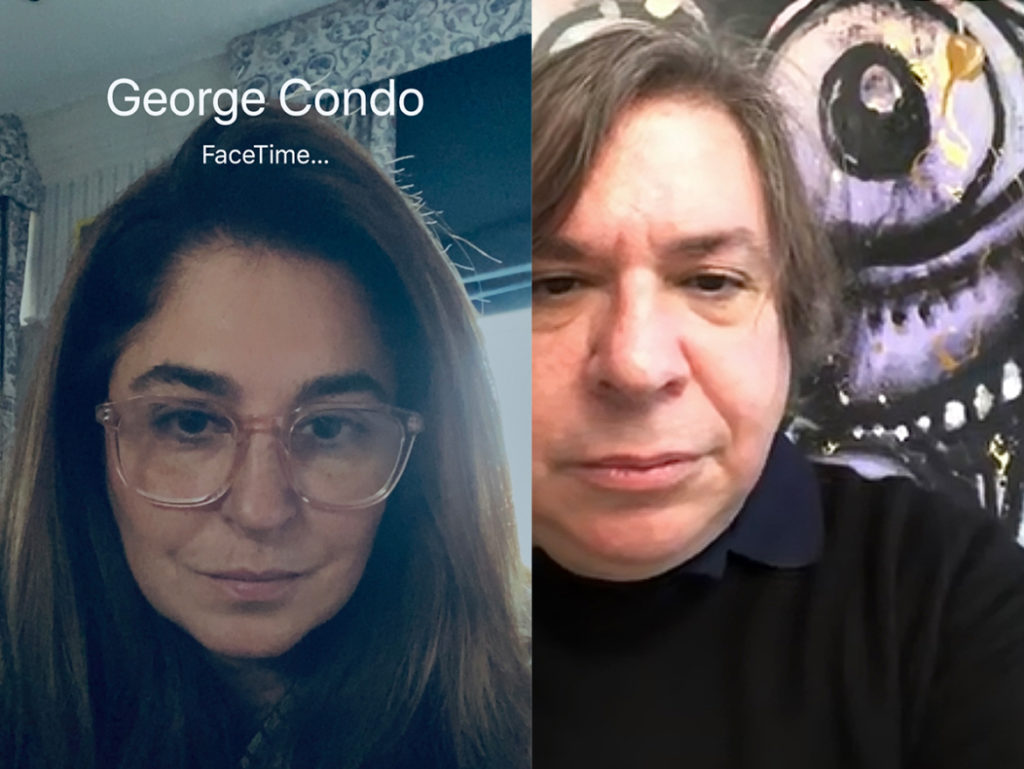

Artnet Gallery Network

Photographer Maryam Eisler would make the case that art is fundamentally a drive to connect, and as quarantines around in the world stretched into the months, she felt that impulse more strongly than ever. She thought other artists might too—thus “Confined Artists – Free Spirits” was borne—an evolving online exhibition published by LUX magazine of artist Facetime and Whatsapp portraits along with shared reflections and words of wisdom from artists in quarantine all around the world.
Below Eisler shares her inspiration for the project and a selection of artist portraits along with their respective thoughts on our current age of crisis.
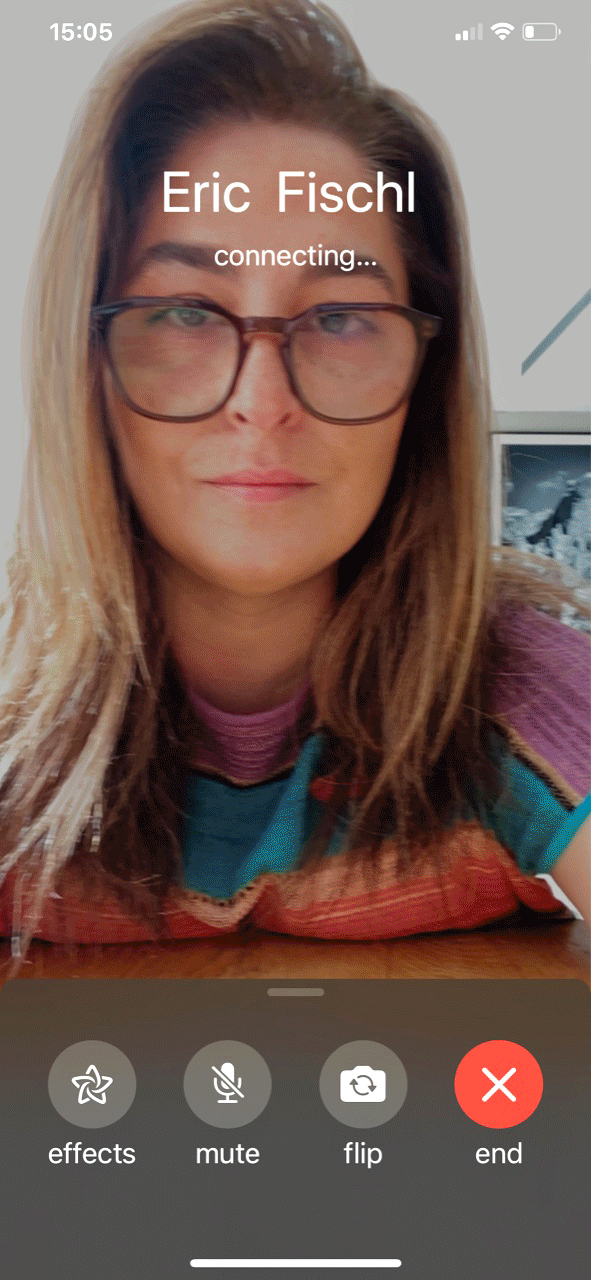
Maryam Eisler, Self-Portrait (2020). Courtesy of the artist.
I woke up on April 1 to another Groundhog Day determined to initiate an original creative endeavor, out of confinement.
Art and photography are my greatest passions, so I decided to freeze-frame this epic moment in history by inviting visual artists to share their thoughts and wisdom for a larger community of spirits, similarly confined in space and time—but not in mind.
Artists have always been visual philosophers and recorders of history. Today, more than ever, they have the potential to give heart and inspiration, where needed and desired. As such, I have had the privilege to virtually photograph these searching minds, presently bound by their private and intimate spaces.
For these series of artist portraits, although limited physically by social distancing guidelines, I was aided by technology, and so I used FaceTime and WhatsApp to capture my subjects, in both mind and soul, through careful prior planning and dialogue — sometimes sharp, and at times blurry, bound by the realities of wifi logistics. Intimate and searching moments, frozen in history.
This has been an emotional journey, given the extraordinary challenge humanity is facing. It has also been a personal journey of rediscovery, into what makes each one of us tick; what makes us rise in the morning and fall into slumber at night, and where we go, and what we do, in between. In times such as these Malraux’s “human condition” and Sartre’s “existential anguish” take on new dimensions. It is my hope, that these images and accompanying poetry, reveal very personal, delicate and emotional moments; honest and forthright, direct and inspiring, intermingled with the pain of sorrow borne by each one of us, for threats new and unforeseen.
But most importantly, it is my sincere belief that these are messages of hope and renewal. What seems to be a common thread in all of the interviews, is the desire for us all to come together, to seek a better self, and to make a better world. One depends on the other, and our futures on them both. Setting aside differences and individual prejudice is vital if we are to survive this moment in history and face the challenges which no doubt await us. Artists and activists, thinkers and doers, we can each make our contributions by widening the streams of positive thinking and action. Life is complicated enough, let’s try for a little cheer with a creative bent.
As my favorite poet and songwriter, Leonard Cohen wrote: “There’s a crack in everything, that’s how the light gets in.” And the light will get in. Of that, I have no doubt.
—Maryam Eisler, London, April 10, 2020
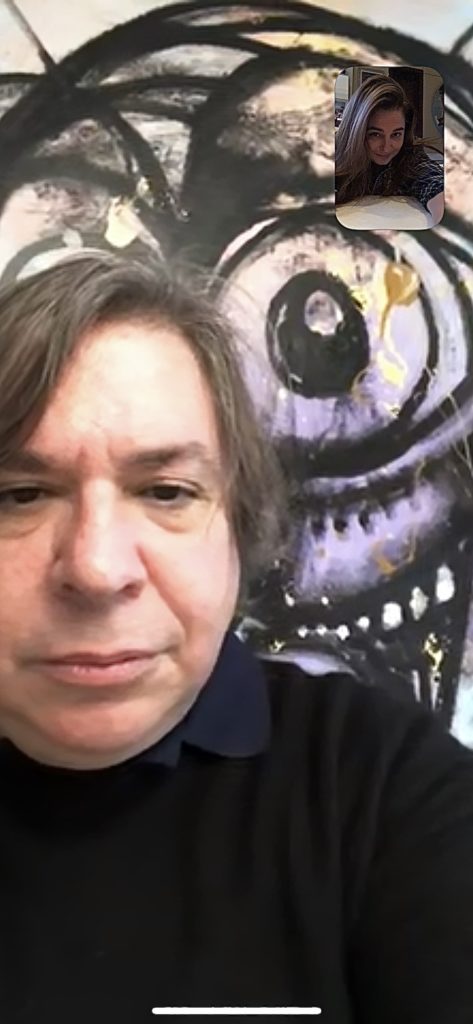
George Condo, photo by Maryam Eisler.
Reflections on the way the world never was and never should be lent itself to inventing a new one. This new world is an existential cage brought on by a fear of contagions. Unless you turn the contagion into a creative device and think back to when you could just be left alone to yourself…no iPhone, no email… a house line and a stereo system, some paint, pencils, paper. and canvas, only the best of friends and deep emotional feelings that you could share intimately …you will go mad with anxiety…now, it is about putting those feelings and memories in a safe place, and hoping for recovery to all who have been struck by the virus…and to pray to something that will keep the healthcare workers and everyday people safe and alive.
Art heals but it has not yet cured cancer or any other disease: it’s something to experience in various intangible ways but has not proven to have a medical impact on pandemics that I know of… Regardless of that, I still believe it can save lives in other ways…it can be an awakening from the void into a new reality that stays with you forever.
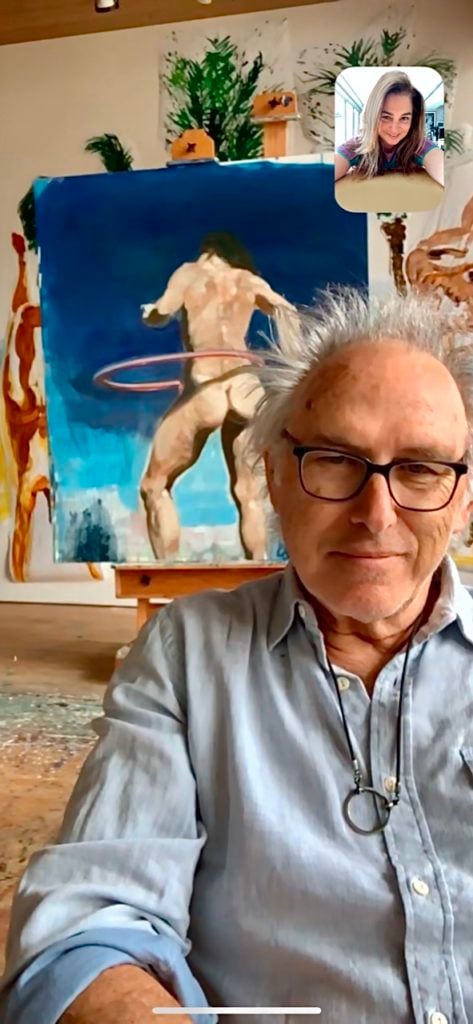
Eric Fischl, photo by Maryam Eisler.
Because I’m used to spending time alone in my studio quarantine has not presented too big of a disruption. However, what enters the studio while I’m working or daydreaming are phantoms of a different sort. They are the demons of Hope and Despair, and they are wreaking havoc. Hope shows up as a two-headed monster: Sentimentality and Nostalgia. Despair slips in with his sidekick, Inertia. The days go by and even progress. My paintings start out light and grow darker. I try to retrieve what light I can without being dishonest. The truth is: no one wants to be where we are right now, but we are here and I believe this is where art and artists must stay, facing forward, dug in and willing to bear witness to our fears, vulnerability, braver.y and resolve.
Paul Simon once wrote that sentimentality was aiming for the heart and missing.
Alberto Manguel wrote that entertainment was a second-hand experience of the world; learning without action and fulfillment without accomplishment.
This is the wisdom that is guiding me now.
Stay healthy. Stay safe. Stay away from me.
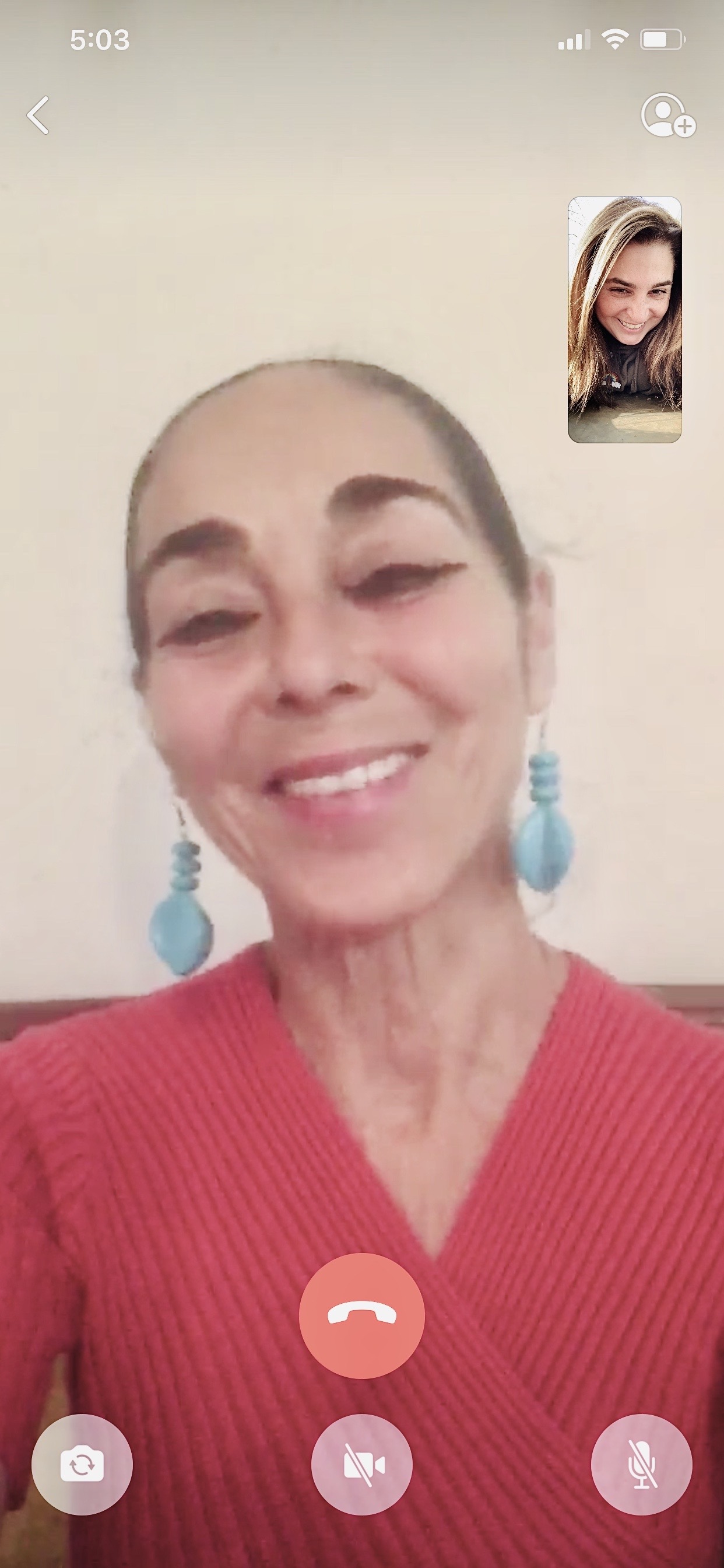
47. Shirin Neshat
We tried to change the world; now the world is changing us, everything about us, including how we work as artists! Living in isolation has made us face ourselves and everything that we have escaped or overlooked in life. Now at ground zero, with our plans postponed or canceled for good, there is a terrifying yet liberating feeling in the air. While the future is uncertain, we might just be embarking on a new beginning, on both individual and collective levels, with an eye on our shared humanity and a newfound respect for nature.
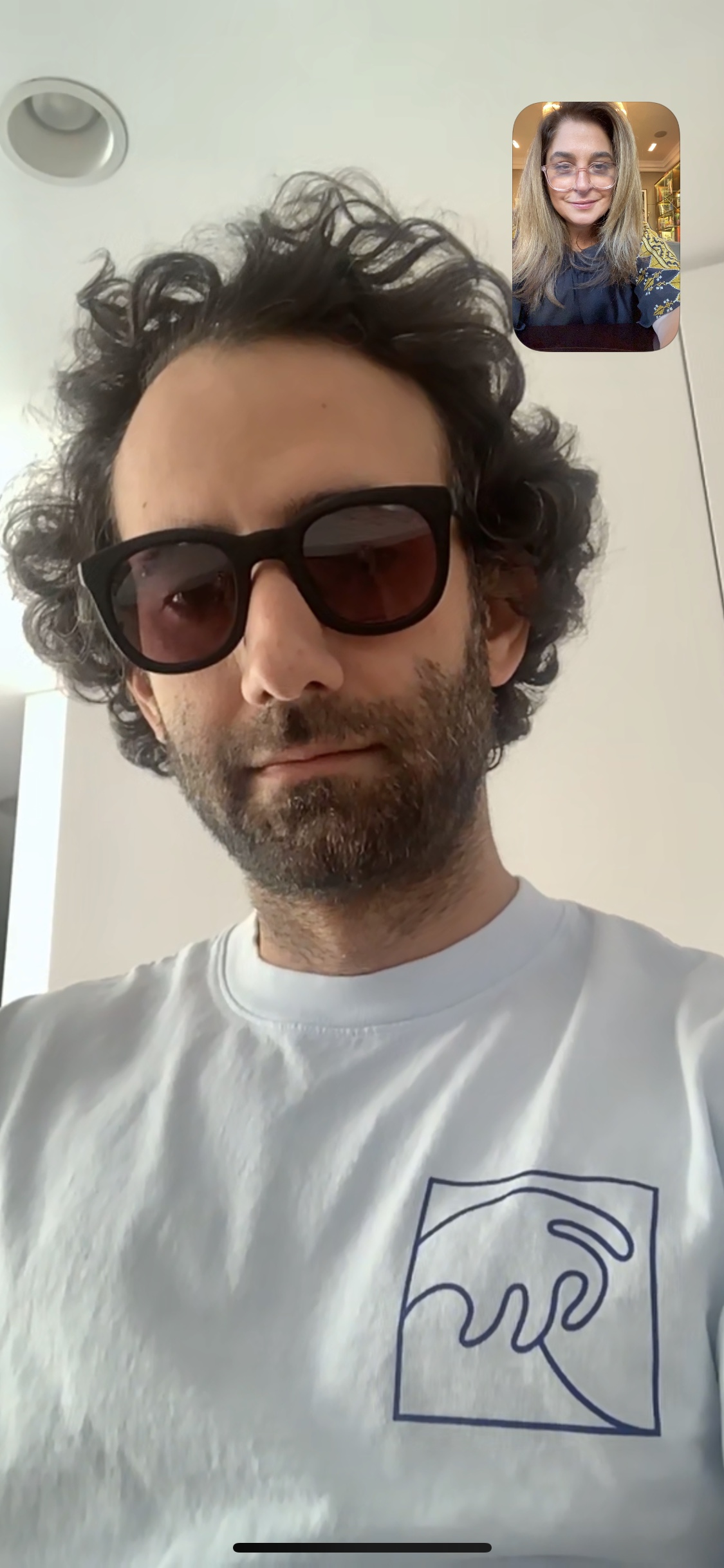
Alex Israel, photo by Maryam Eisler.
I hope you and your loved ones are doing well. I’m here in LA, sheltering-in-place at home with my dog, Mr. Brown. My heart goes out to everyone who is suffering, and to our many heroes who are risking their lives on the frontlines of this terrible pandemic to save ours. Stay home, stay safe, and please be kind to yourself.
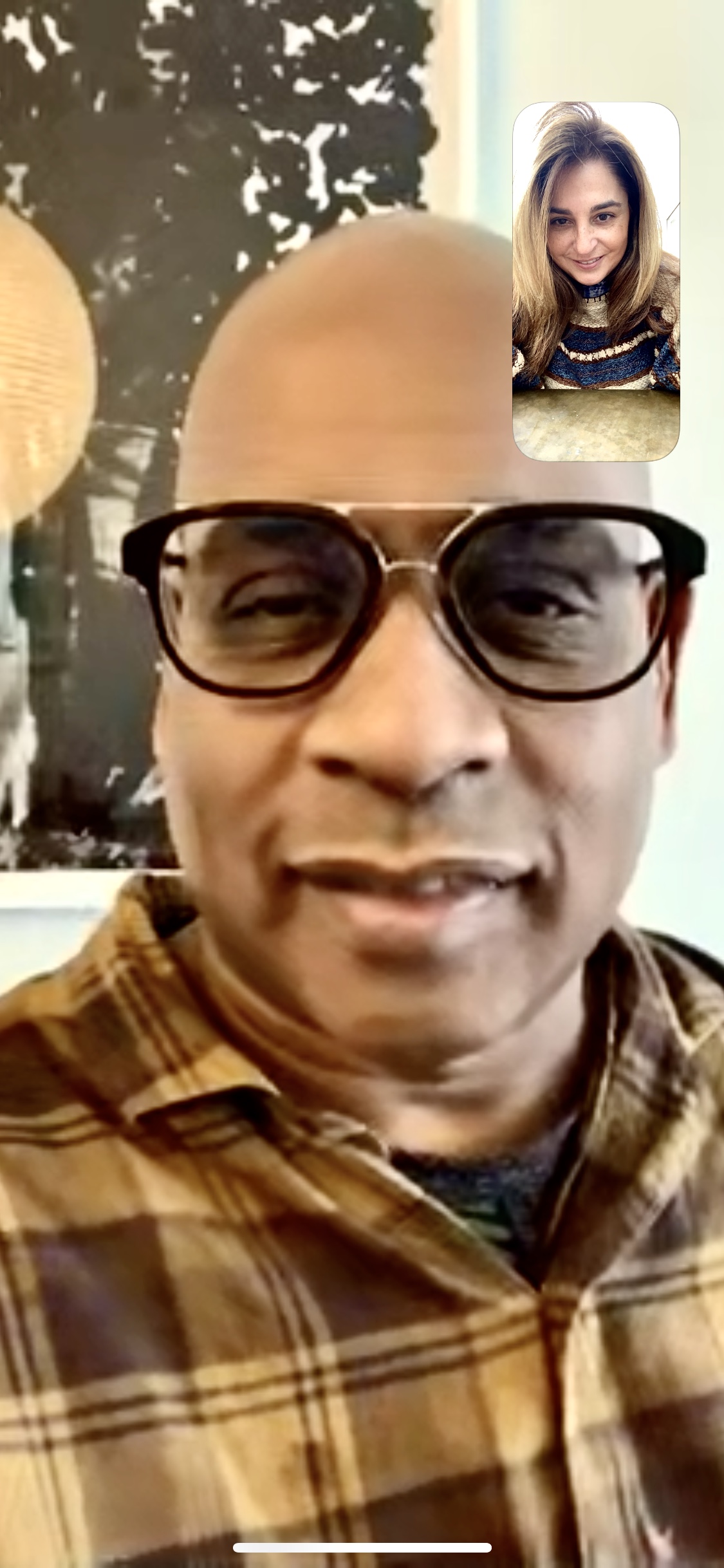
Glenn Ligon, photo by Maryam Eisler.
Since I live alone and have been sheltering in place I have had to learn how to cook for myself. The surprising thing is that making meals has become the highlight of my day.
Cooking has taught me that even in the middle of a pandemic one has the capacity to learn things, to experiment, to improvise and—dare I say it—experience joy.
This spirit has spilled into the studio, where I am making work that looks nothing like I have ever made before.
Whether it is rubbish or not is irrelevant: what matters is that in response to a new world one has to develop new skills.

Tony Oursler, photo by Maryam Eisler.
I hear a scraping sound, the data being removed from our communications devices.
A voice said: Our patterns are recognized, passed around and commodified.
Q: Humanity can’t be measured in metrics or can it?
Then something thought: “Do one thing each day that you never did before, then you can’t be quantified.”
“Yes”, they said, “Then we will be human.”
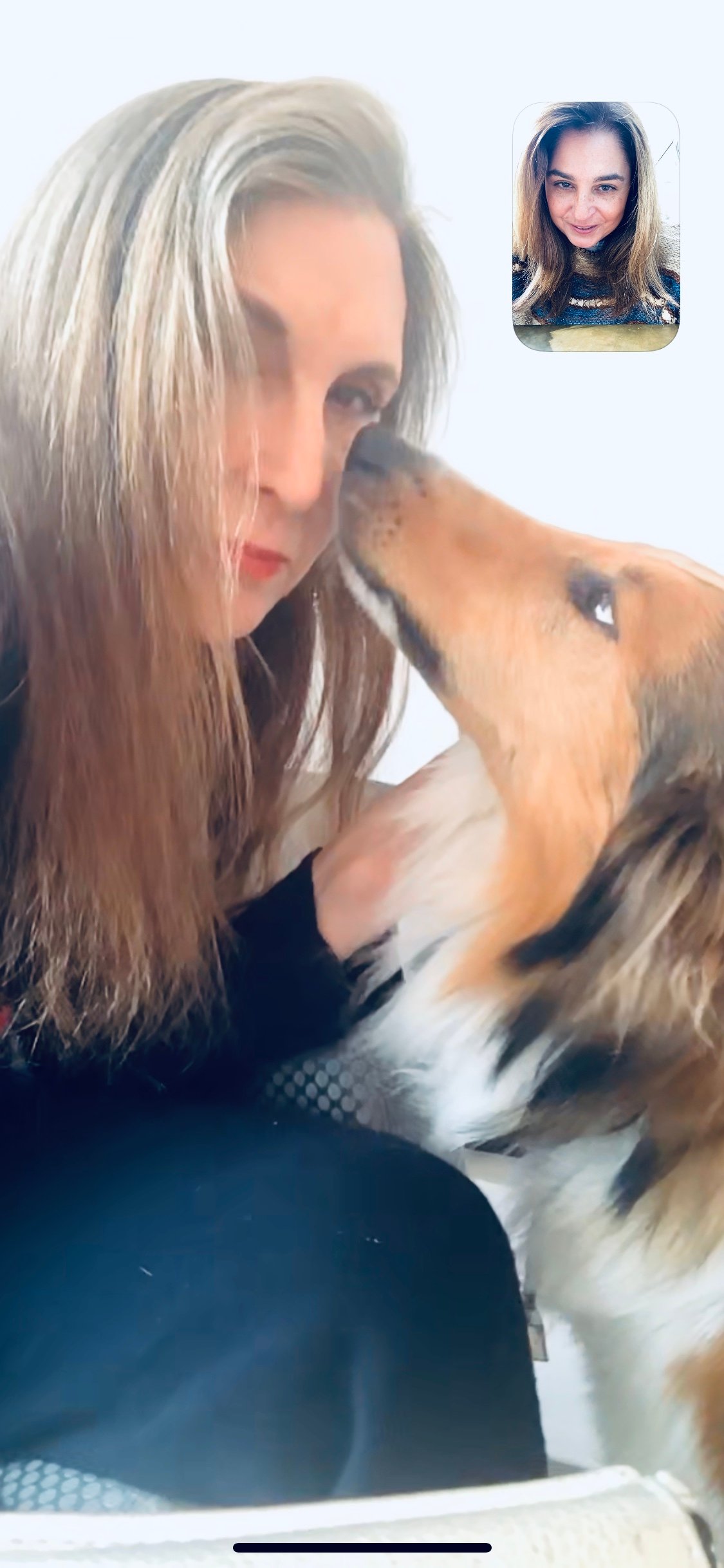
Laurie Simmons (and Penny), photo by Maryam Eisler.
(Some not all) artists are used to a solitary life. I’ve talked to friends who say isolation is not that different from the way things are usually. While I applaud their efforts to normalize the situation I say it’s as different as hell.
No one is used to having their solitude controlled. If you live in a small town you might want to go to the local bar at night. If you live in the city you may want to buy yourself something glamorous for no reason or eat burgers at a diner in the middle of the night. There can be one or a thousand human interactions in a day… After 9/11 or Hurricanes Katrina, Harvey, Maria, and the California wildfires, people came spilling outside, blinking into the sunlight and hugged each other.
Meanwhile as we see our inner cities ravaged, we are starting to understand that even our isolation is a social and class privilege. I’m waiting to see the impact of all this solitude which feels like it is occurring in the middle of an unprecedented tidal wave of “connectivity.” So many contradictions, inconsistencies, incongruities to reckon with.
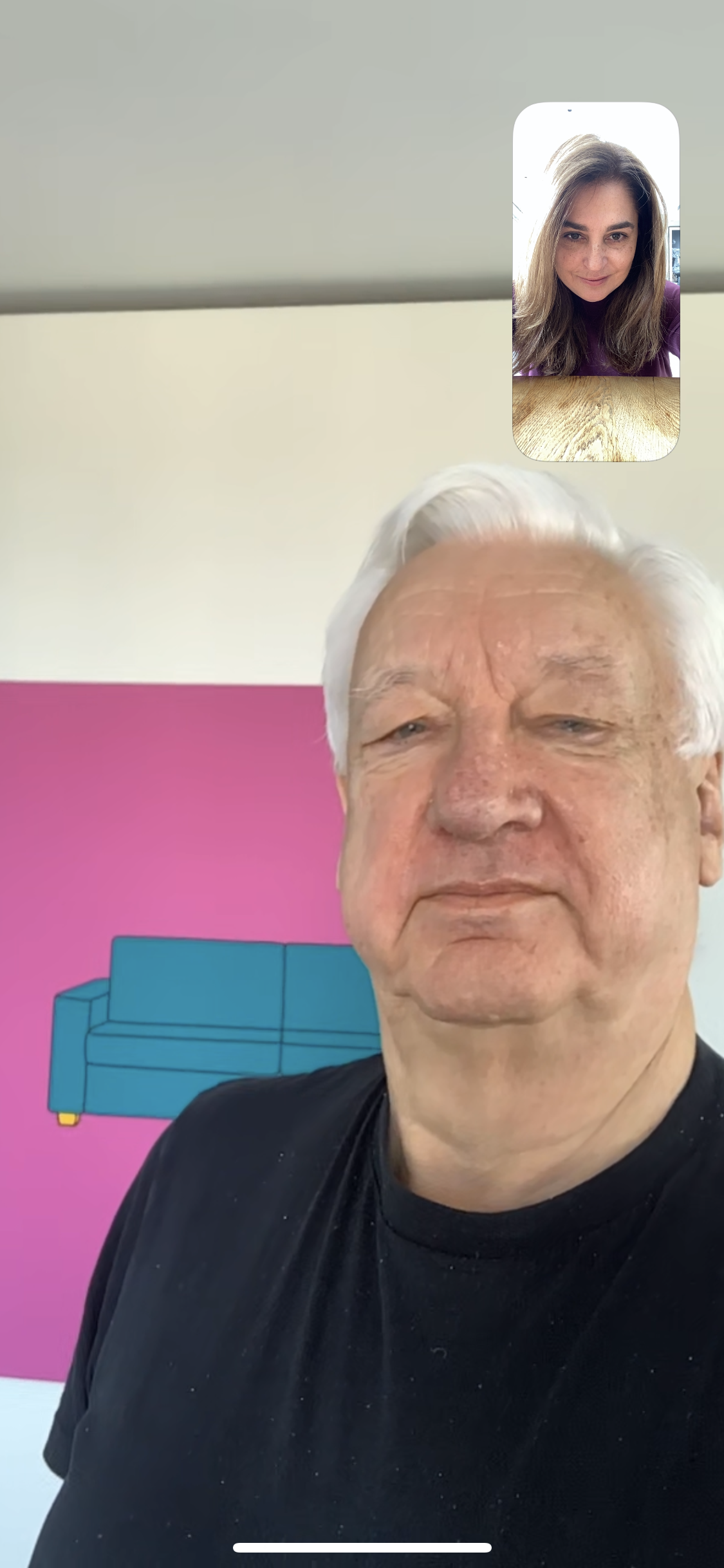
Michael Craig Martin, photo by Maryam Eisler.
Nothing that has happened in my whole life has shown so clearly as the pandemic that we are all part of a single shared humanity, and that society, community, and family are our expression of that humanity.
For years we have seen the role of the public realm criticized, derided, and diminished — but in crisis it has been the state that people everywhere have looked to for guidance and protection. We will ultimately hold those who have controlled the state accountable.
We have watched in amazement that there are some people willing to risk their lives to save ours and that we are ultimately dependent on many who are paid and respected the least.
The pandemic has revealed more forcefully than ever the shameful inequalities that victimize the poor, the minorities, the migrants.
Let us hope that these lessons that seem so clear now will not be forgotten when this tragedy passes.

Emilia Kabakov, photo by Maryam Eisler.
Right now it feels like we have entered ancient times, sitting in the caves, and the enemy is everywhere. These feelings of helplessness, the fears of the unknown are strong, but, surprisingly, not dominating.
We are very comfortable in our “caves.”
And we even have the possibility of visual communication with the whole world.
And this communication, the feeling of community, of solidarity with others, makes us stronger, and fills us with hope, instead of despair.
We are all trying to find ways to help people who need help; we bring them food, send donations, do everything we can to lessen the burden of isolation.
We are all in this together, in the “Boat Of Tolerance” or the “Boat of Our Lives.”
We share our feelings, our fears, our sense of humor and we know that as long as we are showing this united front to our invisible enemy — we will win.
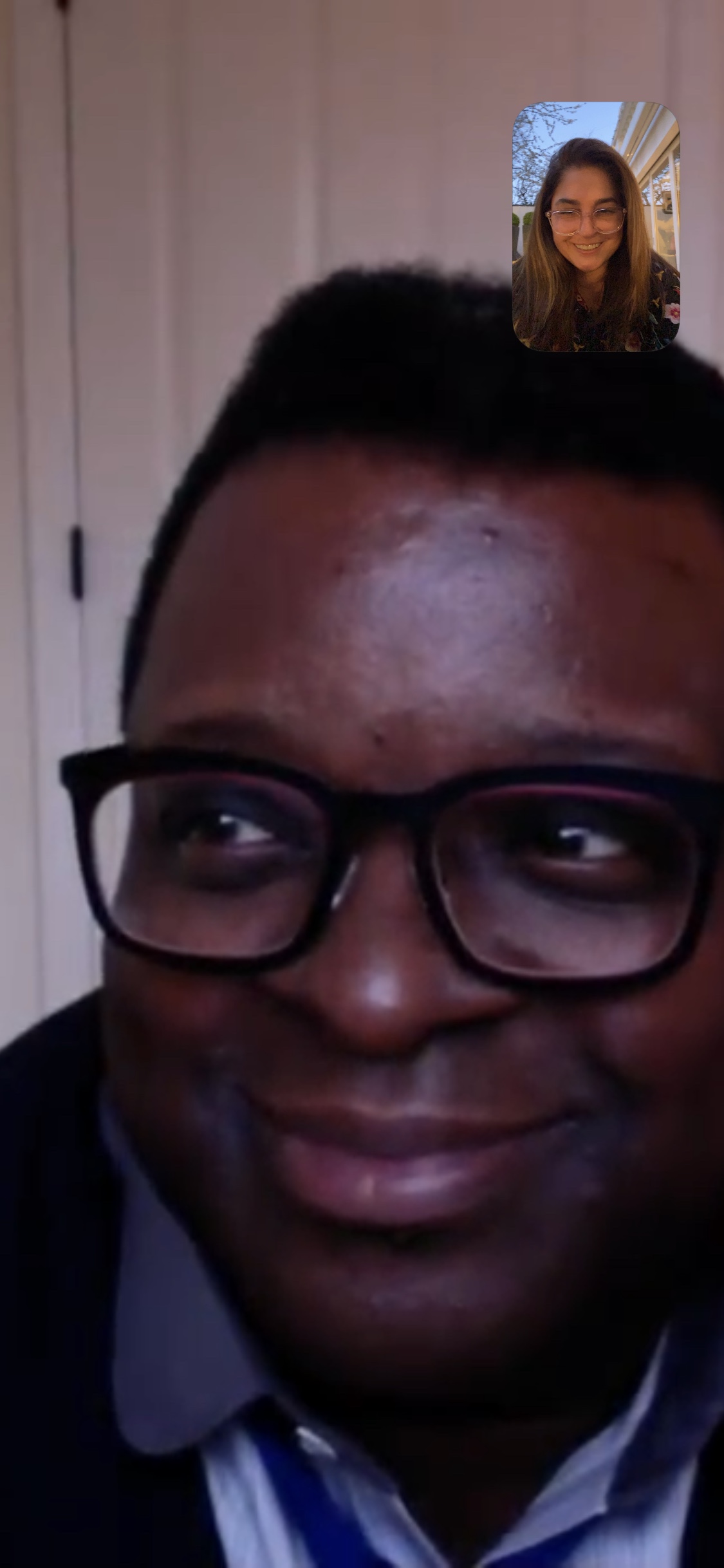
Isaac Julien, photo by Maryam Eisler.
These are challenging times and the future is abstract. What is for certain is that there will be radical shifts across the board, the art world included. And it is our responsibility as artists to take measured steps in order to make sure that the art world does not collapse.
The key is to support our museums, the principal holders of our collective cultural memories and to ensure their sustainability as well as the preservation, conservation and circulation of our mutual practices. And for that, it is critical for us all to stay connected. The activist in me will make sure that I will fervently contribute my part to this endeavor.
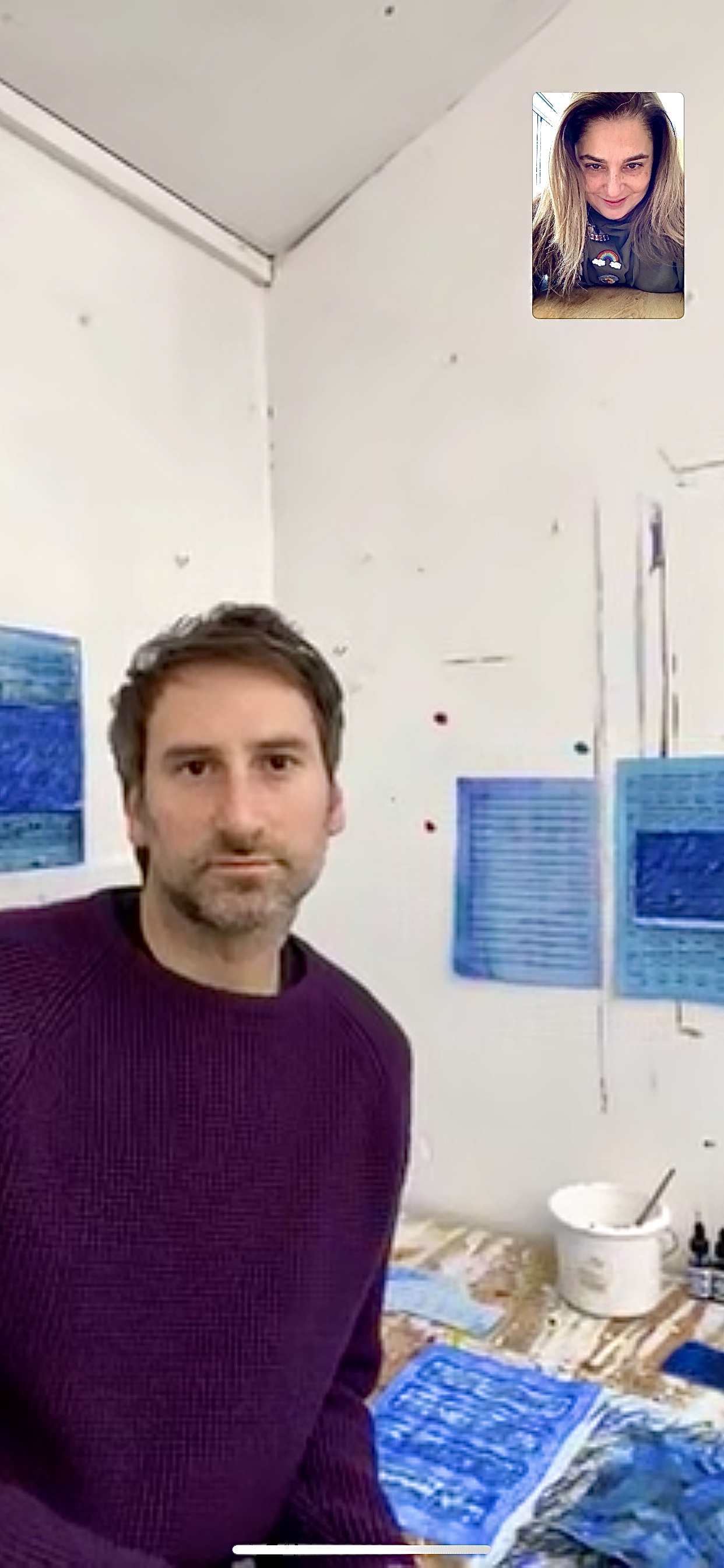
Idris Khan, photo by Maryam Eisler.
I find myself,
reading repetition.
Writing it down
over and over again.
Birds beaks hammering at the window,
Leaves flickering as a shadow.
The way,
hope builds
a house.
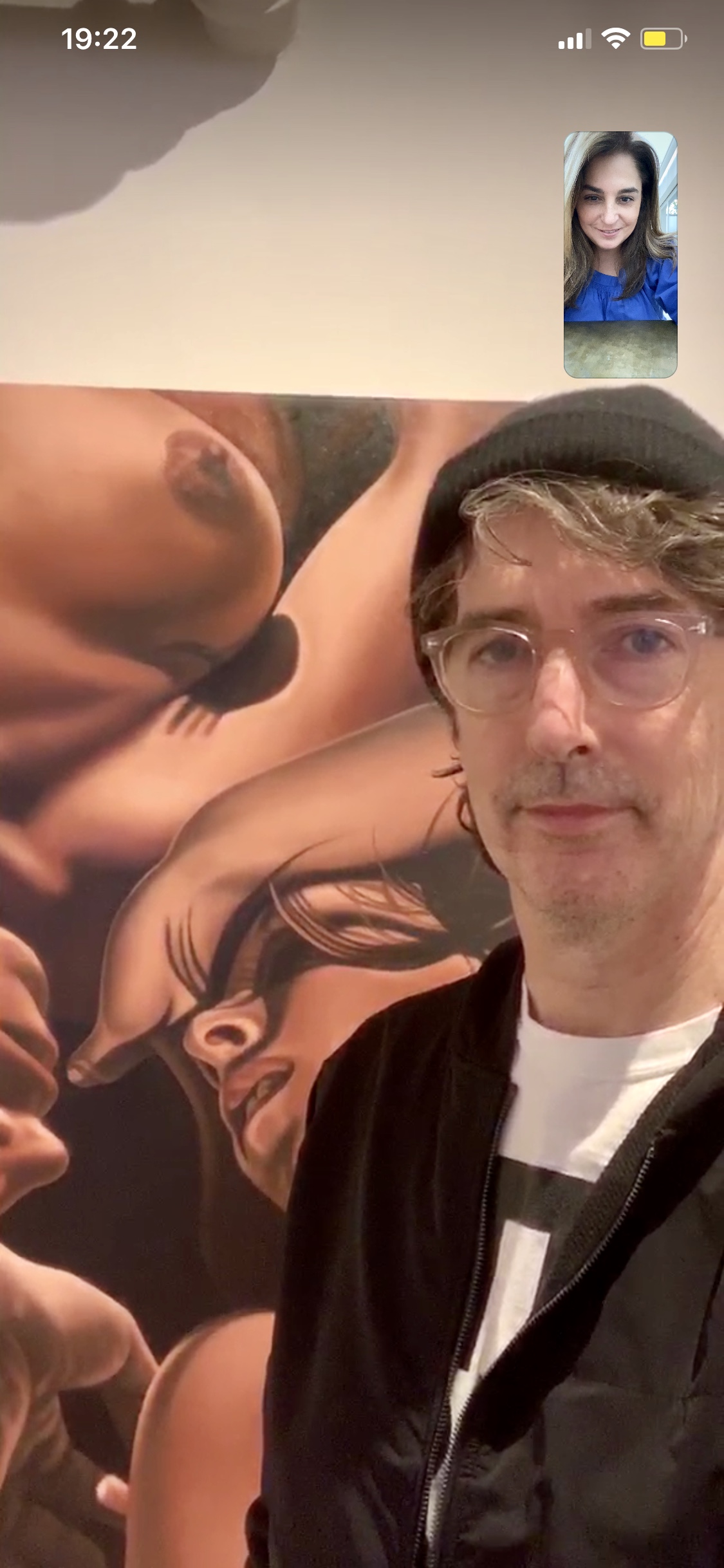
Richard Phillips, photo by Maryam Eisler.
I am writing today from New York City where it was announced that more than 10,000 people have died from COVID 19. I have lived in New York City since the summer of 1986 and there is simply no reference to work within attempting to describe what is happening here.
As COVID-19 is now cresting with hospitals stretched beyond their limits with inadequate equipment and preparation seriously ill people are being turned away who later come back in critical condition. Doctors and nurses are working in dire conditions 24 hours a day helping the many who are stricken.
The streets and parks are nearly empty with only the constant echoes of sirens filling the spaces once inhabited by the gathering of humanity that was New York. Online one reads about the ineptitude of Government at the top level and the struggle that local authorities are having getting critical supplies and funding. Yet daily there are constant signs of the strength and resilience of those who are here for the duration…Those who are working to keep New York fed and operational on every level from local delis to neighborhood urgent care to EMTs, fire and police…Those wearing masks doing essential work and those self quarantined and socially distanced making sure the curve is flattened.
Art seems far away hidden behind passwords in exclusive virtual viewing rooms or languishing in inboxes filled up with notices and invitations to nonexistent art fairs. Having personally spent the last four weeks with the persistent symptoms and ups and downs of a comparatively mild COVID-19 case while caring for my girlfriend whose had a moderate case I know that this virus is unlike any I have seen or experienced. It is scary that once it starts one does not know how bad it will get.
I am grateful that it has not so far been bad for me though it’s been quite difficult at times for my girlfriend. We are recovering while in quarantine watching films and cooking all meals at home. Wearing gloves and masks I walk the dog through desolate neighborhoods. Runners go by with sunglasses and designer cloth face shields and police cars patrol with LED lights that remind everyone to maintain their distance. Invisibility fragility selflessness and bravery are everywhere and nowhere at the same time.
This article is adapted from a version first published by Lux Magazine. Eisler’s project is ongoing.